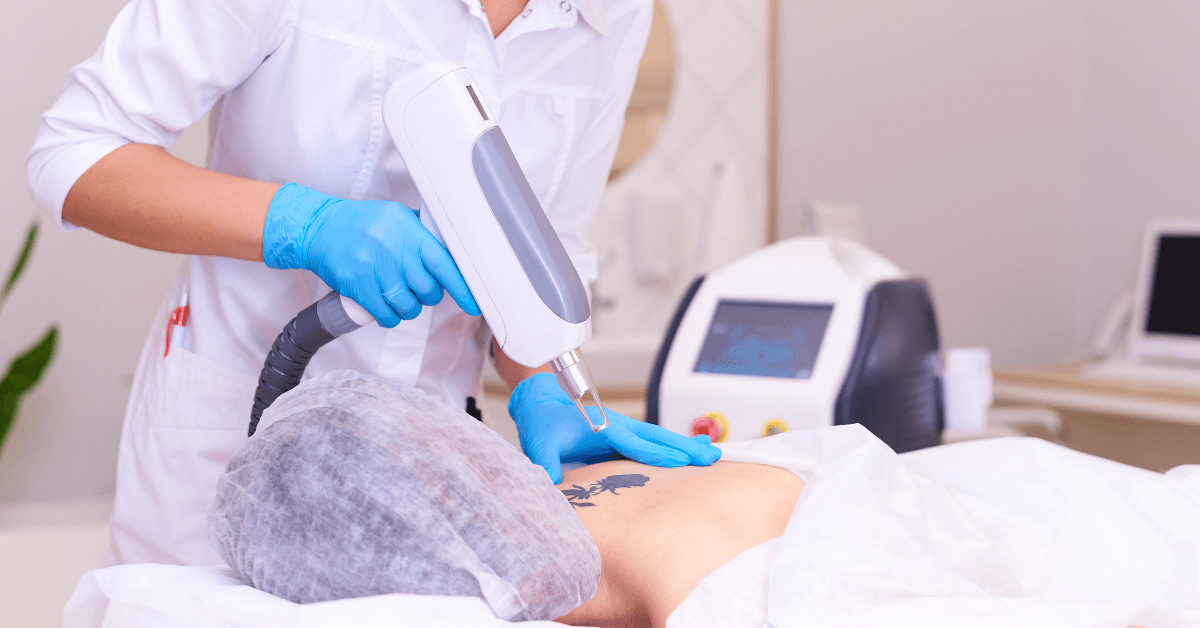Laser Tattoo removal for cover up has become a game-changer for those seeking to transform old tattoos into new works of art. By fading existing ink, laser technology creates a cleaner canvas, enabling tattoo artists to achieve more vibrant and satisfying cover-ups. This article explores why fading is essential, the process involved, and how to ensure the best results.
Why Fade Your Old Tattoo Before Getting a Cover-Up?
Cover-up tattoos are often the solution for unwanted ink, but fading the original tattoo first offers numerous benefits. Here’s why it’s worth considering:
Expanding Your Design Options (Beyond Big and Dark)
Fading allows for greater flexibility in design. Without lightening the old tattoo, artists often need to use large, dark designs to conceal the original ink. A faded tattoo opens up possibilities for intricate patterns, vibrant colors, and even lighter tones.

Achieving a Cleaner, More Vibrant Cover-Up Result
When old ink is faded, the new tattoo can appear sharper and more vibrant. The reduced interference from underlying colors ensures that the final design looks clean and professional.
Avoiding Tattoo “Bleed-Through” or Muddy Colors
Without fading, the old tattoo may “bleed through,” especially if it’s dark or heavily pigmented. This can result in muddy colors or distorted designs in the cover-up. Fading minimizes this risk by reducing the visibility of the underlying ink.
Greater Satisfaction with Your Final Tattoo
A well-faded tattoo ensures that both you and your artist have more creative freedom, leading to a final result you’ll be proud of. It eliminates compromises in design and color selection that might otherwise be necessary.
The Fading Process: How Laser Prepares Skin for New Ink
Laser Tattoo removal is not just about erasing regret; it’s also an effective tool for preparing your skin for new art. Here’s how it works:
Using Laser Technology to Lighten Existing Ink
Laser devices like PicoWay or LightSense® emit high-energy pulses that break down tattoo ink particles into smaller fragments. These fragments are then naturally eliminated by your body over time, leaving behind a lighter tattoo.
How Fading Differs from Complete Tattoo Removal (Goal-Oriented)
Unlike complete removal, fading focuses on lightening the tattoo just enough to serve as a base for the cover-up. This goal-oriented approach requires fewer sessions and is less time-intensive than full removal.
Custom Fading: Targeting Only Specific Parts if Needed
In some cases, only certain areas of the tattoo need to be faded to accommodate a new design. Laser specialists can target specific sections, ensuring precision and efficiency in preparing your skin.
Fewer Sessions Needed: How Many Treatments for Fading?
Preparing a tattoo for a cover-up typically requires fewer sessions than complete removal. Here’s what you need to know:
Typical Session Range for Cover-Up Preparation (e.g., 2-6 Sessions)
Most tattoos need between 2-6 laser sessions to achieve adequate fading for a cover-up. The exact number depends on factors like ink color, depth, and size.
Why It Takes Less Time Than Full Removal
Fading doesn’t aim to completely erase the tattoo but rather lighten it enough for effective coverage. This significantly reduces the number of sessions needed compared to full removal, which can require 8-12 treatments or more.
Factors Affecting How Quickly Your Tattoo Fades for a Cover-Up
Several factors influence how quickly your tattoo fades:
- Ink Color: Black ink fades faster than colored inks.
- Tattoo Depth: Shallow tattoos respond more quickly to treatment.
- Skin Type: Skin tone and healing response play a role.
- Aftercare: Proper care between sessions enhances results.
The Crucial Healing Window: Waiting After Laser Before New Tattoo
Healing is an essential step after laser treatment before applying new ink.
Why Your Skin Needs Adequate Time to Fully Recover
Laser treatments create micro-injuries in your skin as they break down ink particles. Adequate recovery time ensures your skin heals fully, reducing risks like scarring or uneven texture.
Recommended Waiting Period (Minimum 6-12 Weeks to 3-6 Months)
Experts recommend waiting at least 6-12 weeks before getting a new tattoo. In some cases, waiting up to 3-6 months may be necessary depending on your skin’s healing progress and overall health.
Risks of Applying a Cover-Up Tattoo Too Soon
Rushing into a cover-up can lead to complications such as:
- Poor ink retention
- Increased risk of infection
- Uneven healing
Waiting ensures your skin is ready to support vibrant and long-lasting new art.
Partnering for Success: Working with Your Technician & Artist
Collaboration between you, your laser technician, and your tattoo artist is key to achieving optimal results.
The Benefits of Collaboration for Optimal Results
When laser technicians and tattoo artists work together, they can create a tailored plan that considers both fading needs and design goals. This partnership ensures seamless integration between the old and new tattoos.
Choosing an Experienced Laser Tattoo Removal Provider
Look for providers with:
- Certifications in laser technology
- Experience with similar tattoos
- Advanced equipment like Q-switched or picosecond lasers
This ensures safe and effective treatment tailored to your needs5.
Finding a Skilled Cover-Up Tattoo Artist
Select an artist with:
- A strong portfolio of cover-up work
- Expertise in color theory and design integration
- Positive client reviews
A skilled artist will transform your faded tattoo into something extraordinary.
Conclusion
Laser tattoo removal offers an innovative way to prepare your skin for stunning cover-ups. By fading old tattoos, you expand design possibilities, improve final results, and ensure greater satisfaction with your new ink. Partnering with experienced professionals—both laser technicians and tattoo artists—ensures a smooth process from start to finish. Whether you’re covering up an old mistake or simply refreshing your look, laser fading sets the stage for success.
